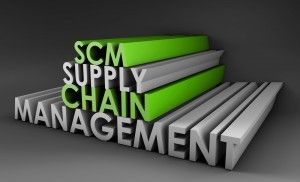4 Steps Towards A More Sustainable Supply Chain

There is increasing pressure on companies to make sure that every step of the supply chain is as sustainable as it possibly can be. This comes from stakeholders, peers, customers, and the media. It is for good reason; something needs to be done to protect the planet, and business and industry are some of the key players that can make the change.
By managing and improving sustainability in the supply chain, a business can conserve resources, save costs, discover new products and supply innovations, optimize processes, and increase productivity levels.
While most businesses are keen to implement a sustainable supply chain, going about actually doing it is a whole different matter. It can be a complicated process, but not doing so is one of the biggest risks a business can take in an age where climate change is top of the agenda. Here, we look at four steps towards implementing a more sustainable supply chain.
Communicate expectations
Finding a balance between sustainability and making sure that you are maximizing your business profits is a challenge, but by communicating your expectations, you can make it much easier. You need to establish your expectations and communicate it to everyone else involved in your supply chain, via a sustainability code of conduct.
Of course, with this, you need to ensure that it does not affect the other aspects of your business too. Reliability and the swift payment of bills so that Skip Tracing is not necessary is essential in all levels of the supply chain, as well as transparency and communication.
Simplify your supply chain
In many cases, the supply chain can be made more sustainable simply by cutting it back and streamlining it. Analyze each step, look at the data, and see how you can combine this knowledge with automation and artificial intelligence to improve processes within the supply chain. Every adaptation that reduces waste, lowers your carbon footprint , and speeds up productivity without compromising on safety and quality is a huge step towards a more sustainable – and simple – supply chain.
Make sure your supply and demand planning is reviewed regularly
A misalignment between what you need to produce and what you actually produce can mean huge wastage in raw materials, energy, and transportation. Again, this is where artificial intelligence and careful analysis of your forecasted supply and demand can ensure you only produce what you need, reducing the waste int terms of materials and resources and ensuring a more efficient manufacturing and supply process.
Keep an eye on environmental risks
Many supply chains already feel the effect of climate change, and as the issue deepens, it will affect more and more companies. Take into consideration external factors such as bush and wildfires, lower agricultural yields, extreme weather conditions, and drought, which can all impact the efficiency, speed, and quality of the supply chain. Having plans in place to mitigate the impact these have is essential for maintaining a stable and reliable supply chain. For instance, partnering with experts like https://www.greshamsinc.com/ provides innovative solutions and insights to managing challenges you may face with a winter storm. Their expertise can help businesses adapt to changing conditions, ensuring operations remain seamless.
By addressing these risks, head-on companies can build a supply chain that is more sustainable and capable of weathering unforeseen challenges.
It is becoming more apparent than ever before that sustainability needs to be a focus of business. These four steps will go a long way to making sure that your business is heading in the right direction.


